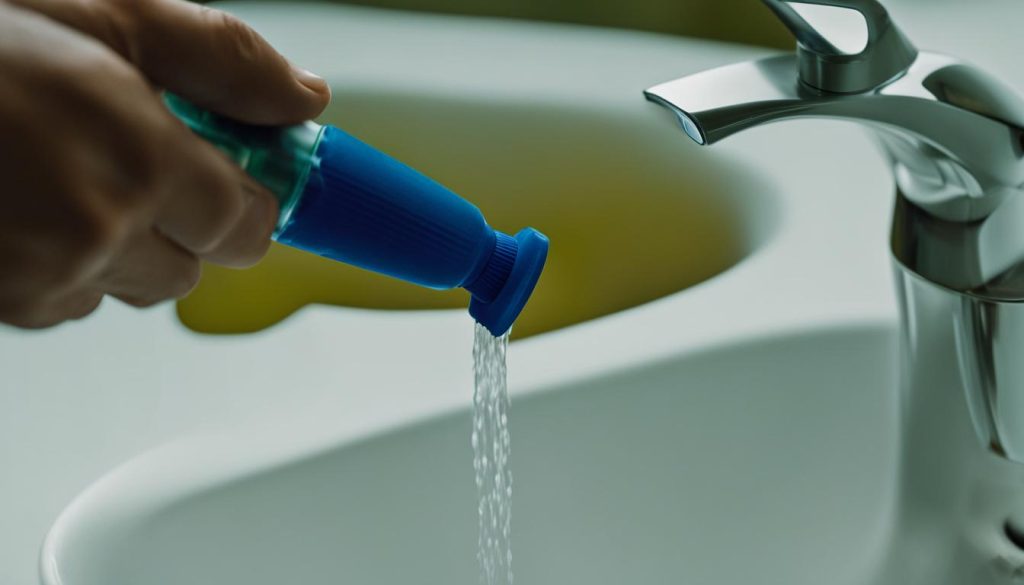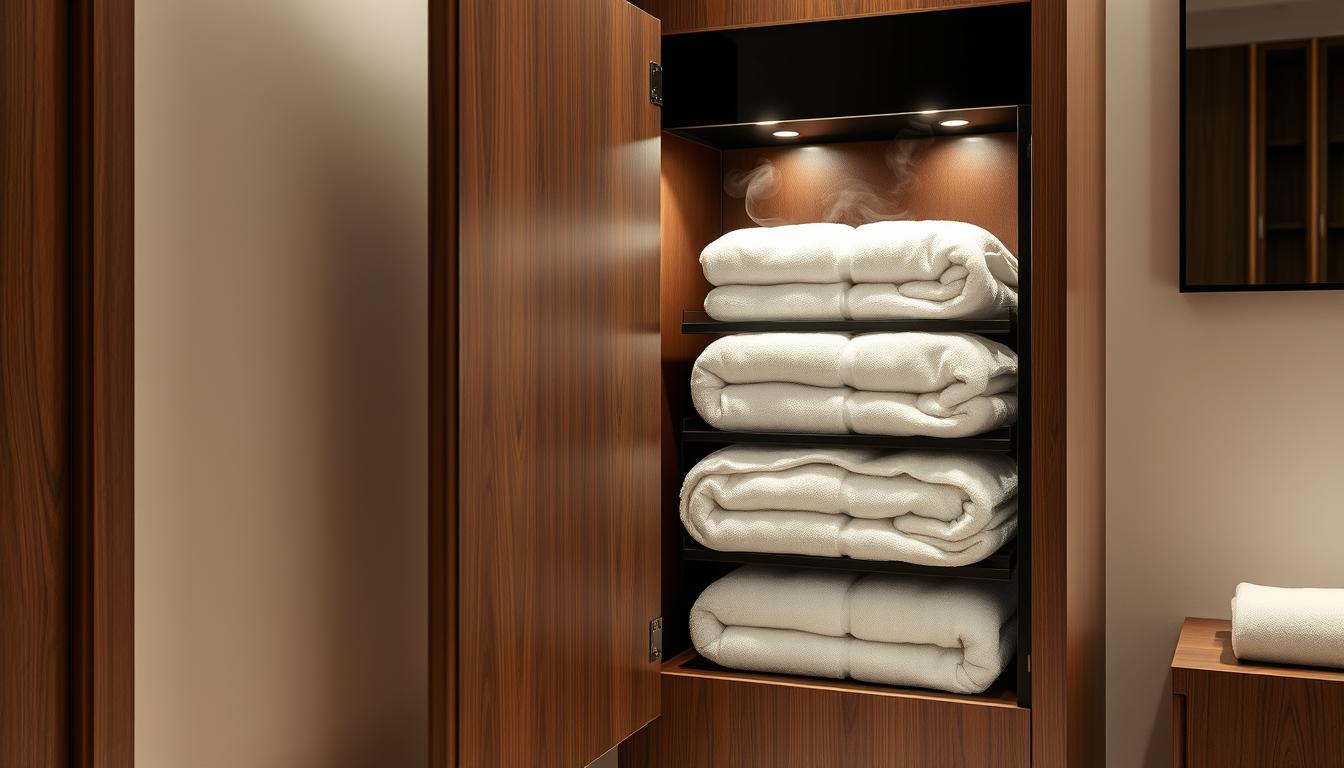Welcome to our guide on bidet maintenance! Bidets are an excellent addition to any bathroom, providing a hygienic and refreshing experience. However, to ensure the optimal performance of your bidet, it’s essential to keep the nozzle clean. In this article, we will explore how often you should clean your bidet nozzle and provide tips to maintain its cleanliness.
Key Takeaways:
- Regular cleaning of the bidet nozzle is crucial for optimal performance and to prevent clogs and buildup.
- Avoid using harsh chemicals or abrasive powders to clean the nozzle, as they can damage the bidet. Instead, opt for mild cleansers and soft cloths.
- Consult the bidet’s manual for specific cleaning instructions, as different models may require different cleaning methods.
- For daily cleaning, utilize the nozzle wash feature and wipe the seat and accessible crevices with a soft, slightly damp cloth. Use mild cleansers or ammonia-free products for dirt and germ removal.
- Once a month, remove the bidet seat and toilet lid for a more thorough cleaning. Wipe them with a soft, damp cloth and mild kitchen dish soap. If applicable, clean the deodorizing filter and inspect the bidet hose for wear.
Daily Cleaning Routine for Bidet Nozzle
To keep your bidet nozzle clean on a daily basis, it is important to follow a regular maintenance schedule. By incorporating these cleaning tips into your daily routine, you can ensure optimal performance and hygiene.
Utilize the Nozzle Wash Feature
Most bidets offer a nozzle wash feature that can effectively clean the nozzle. This feature runs water over the nozzle to remove any residue or buildup. It is recommended to use this feature after each use to maintain cleanliness and prevent clogs.
Wipe the Seat and Crevices
For light dust and dirt that may accumulate on the bidet seat or in accessible crevices, a simple wipe-down with a soft, slightly damp cloth can do the trick. This helps to remove any surface debris and maintain a clean appearance.
Use Gentle Cleansers
When cleaning the bidet nozzle, it is important to choose mild cleansers or ammonia-free products. These are gentle on the bidet’s materials and prevent any damage or discoloration. Avoid using harsh chemicals or abrasive powders, as they can degrade the nozzle over time.
Prevent Submerging and Excessive Force
While cleaning the bidet, it is crucial to avoid submerging the unit in water or using excessive force. These actions may damage the bidet or interfere with its functionality. Instead, focus on gentle cleaning techniques to preserve the bidet’s lifespan.
With these daily cleaning routines in place, you can ensure that your bidet nozzle remains clean and functional for years to come. Regular maintenance is key to preserving the performance and hygiene benefits of your bidet.
Monthly Cleaning Routine for Bidet Nozzle
To ensure proper maintenance of your bidet nozzle, it’s crucial to follow a monthly cleaning routine. This routine involves removing the bidet seat and toilet lid for a thorough cleaning. Use a soft, damp cloth and mild kitchen dish soap to wipe down these components, removing any dirt or grime. If your bidet seat is equipped with a deodorizing filter, take this opportunity to remove it and clean it with a toothbrush and water.

After cleaning the bidet seat and filter, reinstall them and shift your focus to the water nozzle. Manually clean the nozzle by gently wiping the outside with a soft, wet cloth. This step helps remove any residue or buildup that may affect the nozzle’s performance. For bidet attachments, check if the nozzle is removable for easy cleaning.
Monthly Cleaning Routine for Bidet Nozzle in Summary:
- Remove bidet seat and toilet lid
- Wipe components with a soft, damp cloth and mild kitchen dish soap
- Clean deodorizing filter with a toothbrush and water (if applicable)
- Gently wipe the outside of the water nozzle with a soft, wet cloth
- Check if the nozzle is removable for cleaning (for bidet attachments)
By following this monthly cleaning routine, you can maintain the cleanliness and functionality of your bidet nozzle, ensuring optimal performance and hygiene.
| Step | Description |
|---|---|
| 1 | Remove bidet seat and toilet lid |
| 2 | Wipe components with a soft, damp cloth and mild kitchen dish soap |
| 3 | Clean deodorizing filter with a toothbrush and water (if applicable) |
| 4 | Gently wipe the outside of the water nozzle with a soft, wet cloth |
| 5 | Check if the nozzle is removable for cleaning (for bidet attachments) |
Semiannual Cleaning Routine for Bidet Nozzle
Regular maintenance of your bidet nozzle is vital to ensure optimal performance and hygiene. While daily and monthly cleaning routines help maintain cleanliness, it’s important to prioritize semiannual cleaning to prevent mineral deposits and buildup. Following bidet nozzle cleaning frequency guidelines will help extend the lifespan of your bidet and keep it running smoothly for years to come.
Every six months, take the time to inspect the bidet seat for a strainer near the inlet. This strainer acts as a barrier, protecting the inner components from sediment and grime that can accumulate over time. If your bidet seat has a strainer, carefully remove it and rinse away any debris or residue under running water.
To add an extra layer of protection against mineral deposits, consider installing a bidet water filter between the water hose and the seat. This filter will help ensure that the water flowing through the bidet is clean and free from impurities. A clean water source not only improves the bidet’s performance but also enhances the overall hygiene experience.
If your bidet seat has a water shut-off valve, it’s essential to clean the connection hose’s inside during this semiannual cleaning routine. Use a soft cloth or a small brush to gently wipe away any buildup or debris from the hose’s interior surface. This step will help prevent any blockages or disruptions in the water flow, maintaining optimal performance.
By following these bidet nozzle cleaning frequency guidelines and incorporating regular maintenance into your routine, you can ensure that your bidet remains clean, functional, and hygienic. Remember to consult your bidet’s manual for any specific cleaning instructions or recommendations.

| Step | Task |
|---|---|
| 1 | Inspect the bidet seat for a strainer near the inlet. |
| 2 | If a strainer is present, remove it and rinse away any sediment or grime. |
| 3 | Install a bidet water filter between the water hose and the seat to protect against mineral deposits. |
| 4 | Clean the connection hose’s inside if your bidet has a water shut-off valve. |
Additional Maintenance Tips for Bidet Nozzle
In addition to regular cleaning routines, there are a few other maintenance tips to keep in mind for proper bidet nozzle care. These bidet nozzle maintenance suggestions will help ensure the optimal performance and longevity of your bidet:
- Handle the bidet seat with care: Always handle the bidet seat with care to prevent any damage to the soft-close lid and seat mechanism. Avoid slamming the seat or lid, as this can lead to premature wear and tear.
- Use gentle cleansers: When cleaning the bidet seat, avoid using harsh chemicals or bleach as they can damage the plastic. Instead, use only water or a mixture of vinegar and water to clean the surface of the bidet seat and nozzle. This bidet nozzle maintenance tip will help preserve the integrity of the materials and prevent any discoloration or deterioration.
- Inspect the bidet hoses: Regularly inspect the bidet hoses for any signs of bulging or wear. Over time, hoses can become brittle or develop leaks, which can affect the performance of your bidet. If you notice any damage or signs of deterioration, consider replacing the hoses to ensure proper functioning.
- Replace the carbon air deodorizer: Some bidet seats come equipped with a carbon air deodorizer to neutralize any unpleasant odors. These deodorizers typically have a lifespan of about six months to a year, depending on usage. To maintain optimal freshness, replace the carbon air deodorizer as needed according to the manufacturer’s recommendations.
By following these bidet nozzle maintenance tips, you can ensure the longevity and performance of your bidet while maintaining optimal hygiene.

Troubleshooting Low Water Pressure or Clogged Nozzles
If you’re experiencing low water pressure or clogged nozzles with your bidet, don’t worry. There are a few simple troubleshooting steps you can take to fix the problem.
Start by extending the nozzles and gently cleaning them with a soft toothbrush soaked in a mixture of vinegar and water. This will help remove any mineral deposits or debris that may be causing the low pressure or clogs.
If your bidet has removable nozzle tips, you can soak them in vinegar to unclog any stubborn deposits. For nozzles that don’t have a removable tip, you can try using a Ziploc bag filled with vinegar to soak the entire nozzle and dissolve any blockages.
If these steps don’t resolve the issue, it may be necessary to replace the nozzle tip or consider using water filters to combat hard water deposits. Always consult the bidet’s manual for specific troubleshooting instructions to ensure you’re following the correct procedures.
FAQ
How often should I clean the bidet nozzle?
It is recommended to clean the bidet nozzle on a regular basis to ensure optimal performance and hygiene. Neglecting nozzle cleaning can lead to clogs and buildup. Daily cleaning and monthly thorough cleaning are advised, with additional maintenance every six months.
What is the daily cleaning routine for a bidet nozzle?
For daily cleaning, utilize the nozzle wash feature that most bidets offer. This feature runs water over the nozzle to effectively clean it. Light dust and dirt can be wiped with a soft, slightly damp cloth. Use mild cleansers or ammonia-free products to remove dirt or germs. Avoid submerging the bidet or using excessive force while cleaning to prevent damage.
How should I clean the bidet nozzle on a monthly basis?
Once a month, remove the bidet seat and toilet lid for a more thorough cleaning. Wipe them with a soft, damp cloth and mild kitchen dish soap. If the bidet seat has a deodorizing filter, remove it and clean it with a toothbrush and water. Gently wipe the outside of the nozzle with a soft, wet cloth. For bidet attachments, check if the nozzle is removable for easy cleaning.
What is the recommended bidet nozzle cleaning interval?
It is recommended to clean the bidet nozzle once a month for a thorough cleaning. This routine helps maintain optimal hygiene and prevents clogs or buildup.
What additional maintenance tips should I keep in mind for the bidet nozzle?
Handle the bidet seat with care to prevent damage to the soft-close lid and seat mechanism. When cleaning the bidet seat, avoid harsh chemicals or bleach, as they can damage the plastic. Regularly inspect the bidet hoses for bulging or wear. Replace the carbon air deodorizer as needed.
How can I troubleshoot low water pressure or clogged nozzles?
If you experience low water pressure or clogged nozzles, try extending the nozzles and cleaning them with a soft toothbrush soaked in vinegar and water. For removable nozzle tips, soak them in vinegar to remove deposits. For non-removable nozzle tips, use a Ziploc bag filled with vinegar to soak the entire nozzle. In some cases, nozzle tip replacement or water filters may be necessary. Consult the bidet’s manual for specific troubleshooting instructions.


